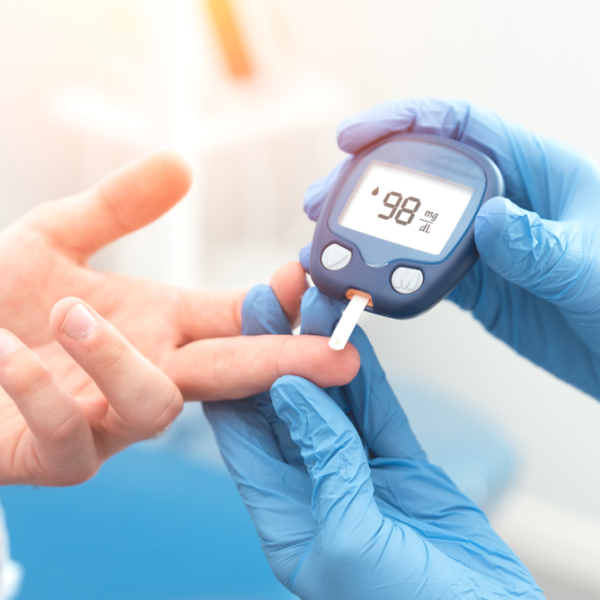Poor blood circulation is a common health problem that can significantly impact your quality of life. If you often experience numbness, tingling, a cold sensation in your extremities, or unexplained fatigue, you may be suffering from poor blood circulation. In this article, we will explore in detail the main causes of this disorder, its associated symptoms, and possible solutions to improve your blood circulation.
What is poor blood circulation?
Poor blood circulation occurs when blood flow to certain parts of your body is reduced or obstructed. This can be due to a narrowing of the arteries, damage to blood vessel walls, venous insufficiency, or other factors that affect your heart’s ability to pump blood efficiently throughout your body. Poor blood circulation can lead to a variety of uncomfortable symptoms and, if left untreated, can lead to more serious complications.
Common causes of poor blood circulation

There are many reasons why you may suffer from poor blood circulation. Some causes are related to underlying medical conditions, while others result from lifestyle factors. Understanding the common causes of poor blood circulation can help you identify changes you can make to improve your vascular health. Let’s take a closer look at some of the most frequent causes.
1. Atherosclerosis
Atherosclerosis is one of the main causes of poor blood circulation. This condition develops when plaques of cholesterol and other substances accumulate on the walls of your arteries, narrowing them and reducing blood flow. Over time, these plaques can harden and further limit circulation, increasing the risk of heart attack, stroke, and other serious complications.
2. Venous insufficiency
Venous insufficiency is another common cause of poor blood circulation, particularly in the legs. This condition occurs when the valves in your veins do not function properly, allowing blood to pool instead of returning to your heart. Venous insufficiency can lead to fatigue, cramps, leg pain, and varicose veins. In severe cases, it can also lead to skin changes and ulcers.
3. Diabetes
Diabetes is a metabolic disease that can significantly impact your blood circulation. High blood sugar levels can damage nerves and blood vessels, leading to poor blood circulation. People with diabetes are more likely to develop circulation problems, especially in the feet and legs, which can increase the risk of infections and slow-healing wounds.
4. Smoking
Smoking is a major risk factor for many health problems, including poor blood circulation. The chemicals in cigarette smoke can damage the walls of your blood vessels, making them less elastic and more likely to narrow. Smoking can also reduce the amount of oxygen in your blood, which can worsen the symptoms of poor blood circulation.
5. Sedentary lifestyle
A sedentary lifestyle can contribute to poor blood circulation by slowing down blood flow in your body. When you sit for long periods, your muscles do not contract as often, which can hinder your veins’ ability to send blood back to your heart. This can lead to swelling, discomfort, and fatigue in your legs and feet.
6. Stress
Chronic stress can also play a role in poor blood circulation. When you are stressed, your body releases hormones like cortisol and adrenaline, which can cause your blood vessels to constrict and increase your blood pressure. Poor blood circulation due to stress can manifest as cold, red hands and numbness and tingling in the extremities.
Other risk factors
In addition to the causes mentioned above, other factors can increase your risk of developing poor blood circulation, including:
- Obesity
- Physical inactivity
- A diet high in saturated fats and sodium
- Certain medications, such as beta-blockers and oral contraceptives
- Hormonal disorders, such as hypothyroidism
- Autoimmune disorders, such as systemic lupus erythematosus
Symptoms of poor blood circulation
severity of the condition. However, some common signs and symptoms include:
- Numbness and tingling in the extremities
- Cold hands and feet
- Red hands due to poor circulation
- Pain or cramping in the legs, especially when walking or exercising
- Slow-healing wounds, particularly on the feet and legs
- Hair loss or brittle nails
- Pale or bluish skin
- Unexplained fatigue
If you experience any of these symptoms persistently, it is essential to consult your doctor for an accurate diagnosis and appropriate treatment plan.
How to improve your blood circulation

Fortunately, there are several ways to improve your blood circulation and reduce your risk of complications. Here are some effective strategies:
- Exercise regularly: Physical activity helps stimulate blood circulation and strengthen your heart and blood vessels.
- Quit smoking: Quitting smoking can significantly improve your blood circulation and reduce your risk of heart disease and other health problems.
- Eat a healthy, balanced diet: Choose foods high in fiber, vitamins, and minerals, and limit your intake of saturated fats, sugar, and sodium.
- Manage your stress: Find healthy ways to manage stress, such as meditation, deep breathing, or engaging in a relaxing hobby.
- Drink plenty of water: Staying hydrated helps keep your blood fluid and prevents dehydration, which can worsen circulation problems.
- Wear loose-fitting clothing: Tight clothing can hinder blood circulation, so opt for comfortable, loose-fitting outfits.
- Try smart heated gloves: Innovative products like Totum Tech’s smart heated gloves can help keep your hands warm and improve blood circulation.
When to see a doctor?
While many circulation problems can be managed through lifestyle changes, it is important to consult a doctor if you experience persistent symptoms or have a family history of vascular diseases. Your doctor can perform a physical exam, prescribe diagnostic tests, and recommend a personalized treatment plan to help you manage your poor blood circulation and prevent complications.
Conclusion
Poor blood circulation is a common health problem that can have many underlying causes. By understanding the factors that contribute to poor blood circulation and adopting healthy lifestyle changes, you can improve your blood circulation and reduce your risk of complications. If you experience persistent symptoms of poor blood circulation, it is important to consult your doctor for proper diagnosis and treatment.
Remember, innovative solutions like Totum Tech‘s smart heated gloves can also help keep your hands warm and improve blood circulation. Take care of your vascular health today for better long-term quality of life.




